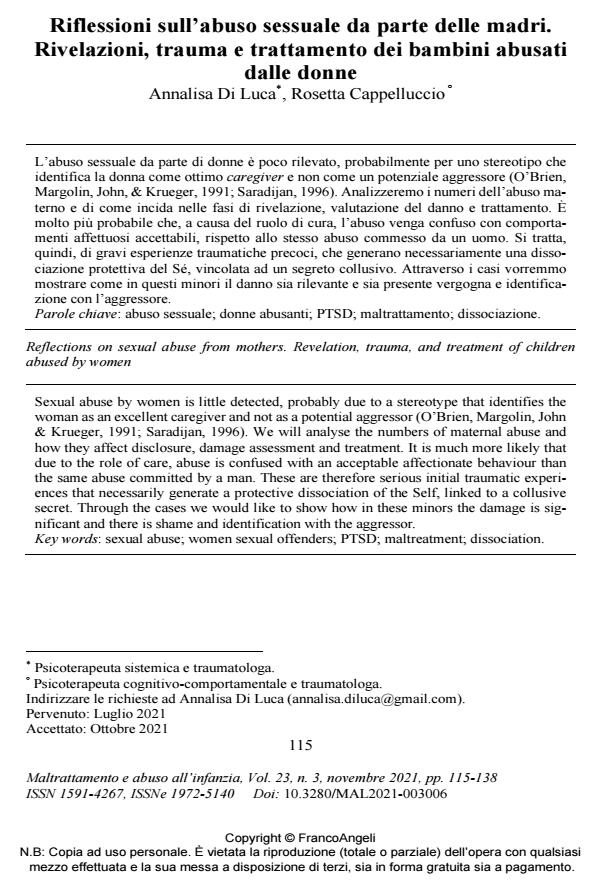Reflections on sexual abuse from mothers. Revelation, trauma, and treatment of children
Journal title MALTRATTAMENTO E ABUSO ALL’INFANZIA
Author/s Annalisa Di Luca, Rosetta Cappelluccio
Publishing Year 2021 Issue 2021/3
Language Italian Pages 24 P. 115-138 File size 244 KB
DOI 10.3280/MAL2021-003006
DOI is like a bar code for intellectual property: to have more infomation
click here
Below, you can see the article first page
If you want to buy this article in PDF format, you can do it, following the instructions to buy download credits

FrancoAngeli is member of Publishers International Linking Association, Inc (PILA), a not-for-profit association which run the CrossRef service enabling links to and from online scholarly content.
Sexual abuse by women is little detected, probably due to a stereotype that identifies the woman as an excellent caregiver and not as a potential aggressor (O’Brien, Margolin, John & Krueger, 1991; Saradijan, 1996). We will analyse the numbers of maternal abuse and how they affect disclosure, damage assessment and treatment. It is much more likely that due to the role of care, abuse is confused with an acceptable affectionate behaviour than the same abuse committed by a man. These are therefore serious initial traumatic experiences that necessarily generate a protective dissociation of the Self, linked to a collusive secret. Through the cases we would like to show how in these minors the damage is significant and there is shame and identification with the aggressor.
Keywords: sexual abuse; women sexual offenders; PTSD; maltreatment; dissociation.
Annalisa Di Luca, Rosetta Cappelluccio, Riflessioni sull’abuso sessuale da parte delle madri. Rivelazioni, trauma e trattamento dei bambini abusati dalle donne in "MALTRATTAMENTO E ABUSO ALL’INFANZIA" 3/2021, pp 115-138, DOI: 10.3280/MAL2021-003006